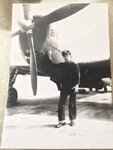- Thread starter
- #21
seesul
Senior Master Sergeant
Thank you and no problem at all. I'm not an aircraft mechanic and am learning a lot thank to such discussion. It would be interesting to hear an opinion of some experienced mechanic anyway."Off Topic". I didn't want an extended discussion to escalate on the physics of prop bending.

